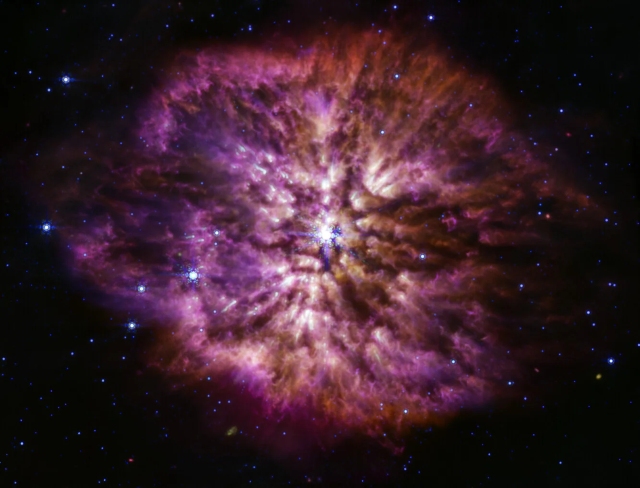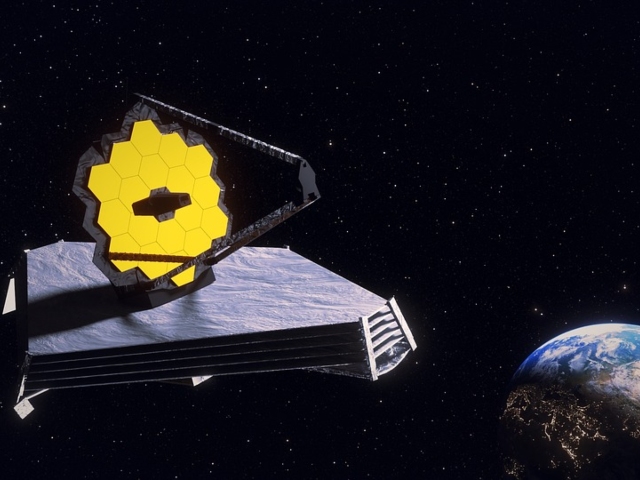[imagesource:maxpixel]
Supernovas have been captured before.
But the singular moment right before the star dies has never been seen before the way it has now.
Again, NASA’s James Webb Space Telescope is doing the work of gods, this time capturing a rare and awe-inspiring image of a star on the cusp of death.
The telescope’s miraculous infrared lens observed the gas and dust flung into space by a huge star known as a Wolf-Rayet / WR 124- called that for the brief phase that comes just before it goes supernova – 15 000 light-years away from Earth in the constellation Sagittarius.
Because of how short the time is that a star is in this phase, it is one of the rarest astronomical observations and was one of the first observations made by Webb, per PetaPixel.

The European Space Agency (ESA) notes that the images show the celestial object in “unprecedented detail”:
“Massive stars race through their life cycles, and not all of them go through a brief Wolf-Rayet phase before becoming a supernova, making Webb’s detailed observations valuable to astronomers,” the ESA explains.
“Wolf-Rayet stars are in the process of casting off their outer layers, resulting in their characteristic halos of gas and dust. The star WR 124 is 30 times the mass of the Sun and has shed 10 Suns-worth of material — so far. As the ejected gas moves away from the star and cools, cosmic dust forms and glows in the infrared light detectable by Webb.”
I can barely wrap my brain around something being 30 times more massive than our sun, which has already shed enough material to account for 10 suns.
The ESA shared two images of the Wolf-Rayet star. The one above is a near-infrared image (captured by Webb’s NIRCam) combined with the MIRI into a composite, while the other is a mid-infrared image (captured by Webb’s MIRI camera) as shown below:

All that compared to the WR 124 as captured by the Hubble Space Telescope in 2015:

The dust in the image is really significant to scientists:
“The origin of cosmic dust that can survive a supernova blast and contribute to the Universe’s overall ‘dust budget’ is of great interest to astronomers,” the ESA says.
“Despite the many essential roles that dust plays, there is still more dust in the Universe than astronomers’ current dust-formation theories can explain. The Universe is operating with a dust budget surplus.”
The image also points to Carl Sagan’s Stardust concept, which NASA’s Amber Straughn thinks is ” the most beautiful concept in all of astronomy”, per Sky News:
“The fact that the iron in your blood and the calcium in your bones was literally forged inside of a star that exploded billions of years ago.
“And that’s what we’re seeing in this new image. That dust is spreading out into the cosmos and will eventually create planets. And this is how we got here, in fact.”
Put that in your pipe and smoke it.
[source:petapixel]





